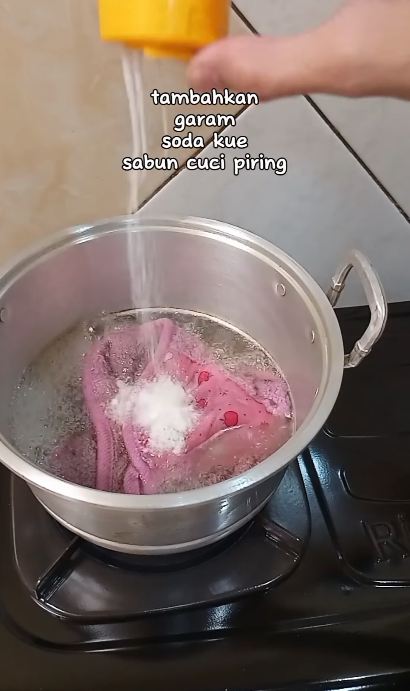Instagram/@indah3yani
Brilio.net - Using a high-intensity rag makes this item get dirty easily. Usually, rags that are frequently used will turn dirty and oily . Not only that, the appearance of the rag also tends to turn black because the original color starts to fade.
Even though dirty fabric like this is less comfortable to use. Instead of being clean, the surface wiped with this cloth will actually get dirtier and smellier. Therefore, rags must be washed regularly to keep them shiny and comfortable to use.
So, to wash rags, a number of people usually rely on detergent. However, if the stain is very stubborn, quite a few people choose to soak the cloth in water mixed with citrus. After investigating, citrus can be a very effective cleaning agent for removing stubborn stains on rags.
However, if you don't have citron, there are other ingredients that are no less effective for cleaning stubborn stains on rags, you know. This material has been used by women who own the Instagram account @indah3yani. Through one of the uploaded videos, he admitted that he only used three kitchen ingredients to wash dirty and black rags.
Tricks for washing dirty and black rags using 3 kitchen ingredients.
Reported by BrilioFood from the Instagram account @indah3yani on Tuesday (7/5), the kitchen ingredients used were salt, baking soda and dishwashing soap. So, these three ingredients will later be mixed to wash very dirty rags. So for maximum results, he also used hot water to mix the ingredients.

photo: Instagram/@indah3yani
To be clear, boil water in a pan. When it's boiling, add the dirty, black rag. After that, add salt, baking soda and dish soap. The dosage can be adjusted according to how thick the stubborn stain is on the cloth.
Next, stir until all the ingredients are evenly mixed and absorbed into the cloth. Then boil briefly and turn off the heat. After that, let it sit or soak the cloth until the water cools down by itself.

photo: Instagram/@indah3yani
Only then lift the rag. Then I check and brush using additional detergent until the stain is completely gone. If so, rinse and dry in the sun until dry.

photo: Instagram/@indah3yani
When it's dry, the difference will be visible. Compared to before, this dry cloth looks shinier and cleaner. There's not even a musty smell or sticky oil residue, you know. That way, the rag becomes brighter and more comfortable to use for cleaning kitchen surfaces and various cooking utensils.

photo: Instagram/@indah3yani
Since it was uploaded on Saturday (7/5), this video about tricks for washing dirty rags has been watched more than 34 thousand times. It's not surprising that many other Instagram users are interested and also provide direct responses in the comments column.
"Wow, thanks for the tips sis," said Instagram @fikriyah_mujahidah.
"I want to try it," said Instagram @rose_hasna.
"Ah, it all fell out," said Instagram @dhiyanti12.
View this post on Instagram
Tips for preserving salt so that it doesn't clump easily.
Preserving salt so that it doesn't clump easily can be done in several simple ways. Here are some tips you can try.
1. Store in an airtight container.
Salt easily clumps because it absorbs moisture in the air. Store salt in an airtight container to reduce contact with air.
2. Add rice.
Adding a few grains of rice to the salt dish can help absorb moisture that can cause lumps.
3. Use moisture-absorbing items.
Silica gel or camphor is a moisture-absorbing object that you can put in a salt container to keep it dry.
4. Use iodized salt.
Iodized salt contains additional ingredients that can help reduce the chance of clumping.
5. Keep away from moisture.
Store salt away from sources of moisture such as sinks or stoves.
6. Don't use a wet spoon.
Make sure the spoon or measuring tool you use to scoop out the salt is dry.
7. Use coarse salt.
Coarse salt doesn't tend to clump like fine salt, so consider using it whenever possible.
8. Pay attention to storage temperature.
If possible, store your salt in a cool, dry place to prevent clumping.
9. Shake or squeeze the salt periodically.
If you see the salt starting to clump, shake or squeeze the container periodically to break up the clumps.
(brl/lut)